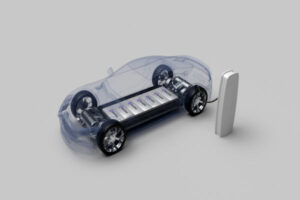StoreDot predicts that while XFC technology was first introduced as a high-end option in high-end EVs, it is now becoming a standard feature that all EV drivers are expected to have. The goals of StoreDot are in line with the increasing demands of consumers for faster charging times and greater range, which will make XFC an essential industry standard.
The company believes that as the EV market develops, XFC technology will follow in the footsteps of other cutting-edge automotive technologies, beginning as a luxury product and then becoming widely available.
Extreme fast charging is already making electric cars (EVs) more appealing and marketable. Drivers are choosing EVs with XFC compatibility because they expect it, offering premium automotives a competitive advantage. But as more drivers discover how convenient it is, it is anticipated that this will play a bigger role in buying decisions across all EV segments.
Additional predictions about XFC made by StoreDot include the fact that it will enable OEMs to offer EVs with smaller battery packs, enabling them to offer vehicles with a more appealing price tag and a lighter weight, and that it will make the EV option much more appealing to drivers who do not have access to home or workplace charging.
Furthermore, when EVs with XFC capabilities become more extensively used, it is anticipated that the use of fast charging infrastructure and ROI would rise.
Dr Doron Myersdorf, CEO of StoreDot, said: “XFC will become mainstream as it meets drivers’ expectations for shorter charging times and a longer range. But it doesn’t stop with the driver; it’ll benefit the entire ecosystem. It will make EVs more desirable, and some OEMs will offer it as a customizable feature like an extended range premium option. This desirability is crucial for OEMs, especially when facing EV demand fluctuations and addressing consumer concerns about infrastructure and charging times.
Stating about its new technology, Dr Doron noted, “Importantly, our XFC technology doesn’t compromise battery life or performance and as consumers realize this, XFC adoption will accelerate. We continue to work closely with leading brands on delivering fast adoption and a shorter time to market for our XFC technology and are excited about it entering the mass market.”
With silicon-dominant anodes, StoreDot‘s tried-and-true ‘100in5’ XFC battery technology can retain high energy densities on par with traditional lithium-ion batteries, while also allowing for extremely quick charging times and extended cycle life.
Key Take Aways
- According to StoreDot, this advance technology will go from being a luxury feature only seen in expensive EVs to being a standard feature in all vehicle classes.
- Consumer expectations for faster charging times and better charging experiences will fuel demand for XFC, which will be especially enticing to EV users with restricted access to home or office charging.
- XFC gives OEMs the ability to sell EVs with a smaller battery pack, which allows for a more appealing price tag and a reduced carbon impact.
- EV models may be upgraded with StoreDot’s XFC technology, which OEMs are now evaluating.
- XFC will enable higher usage of high-power charging stations (more KW charged per charging outlet), improving their return on investment.
StoreDot is getting ready to fulfill future demand throughout the whole EV industry as XFC technology advances. The business is still on schedule to have its XFC cells, which can charge a vehicle 100 miles in five minutes, ready for production this year. By 2026, it wants to deliver 100 miles charged in 4 minutes, and by 2028, it wants to deliver 100 miles charged in 3 minutes.




